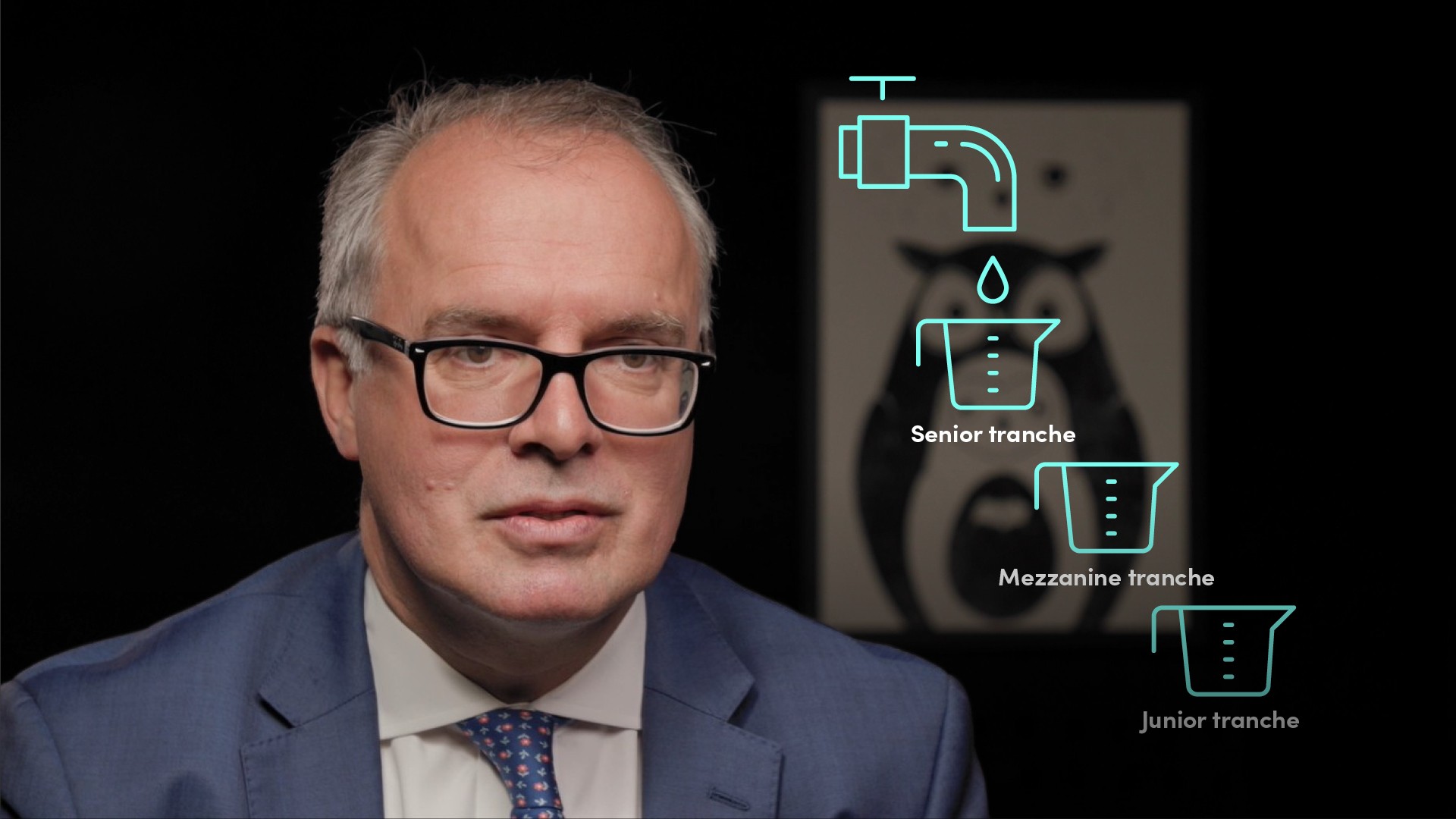
What Are the Uses of Securitisation?

Francesco Dissera
25 years: Securitisation
In this video, Francesco digs deeper into the topic of securitisation, covering more advanced terms such as why financial institutions use securitisation, synthetic securitisation, the different tranches of securitisation and what they mean for investors. He finishes by discussing what makes it appealing to investors and what we can expect in the future.
In this video, Francesco digs deeper into the topic of securitisation, covering more advanced terms such as why financial institutions use securitisation, synthetic securitisation, the different tranches of securitisation and what they mean for investors. He finishes by discussing what makes it appealing to investors and what we can expect in the future.
Subscribe to watch
Access this and all of the content on our platform by signing up for a 7-day free trial.

What Are the Uses of Securitisation?
16 mins 48 secs
Key learning objectives:
Identify why financial institutions use securitisation
Define synthetic securitisation
Explain the different tranches of securitisation
Overview:
In this video Francesco explores that Securitisation more than a product is a technique allowing the owner of a receivables or a series of them to obtain financing and in some circumstances to also achieve capital relief (and/or accounting derecognition).
Subscribe to watch
Access this and all of the content on our platform by signing up for a 7-day free trial.
Why do financial institutions use securitisation?
In the US, the tool is still used for funding purposes, attracting different types of investors depending on the seniority of the notes. A relatively small proportion of ABS is distributed in the capital markets: only 37% is distributed publicly or privately. The remainder is typically retained by sponsors/originators.
What do sponsors and originators do with retained ABS?
- Pledge them, subject to certain eligibility criteria, to the Central Bank in return for long term financing
- Banks can use securitisation for short term repo purposes
- They can use securitisation to enter into a private financing arrangement with other market participants
What regulation is in place to manage risk transfer?
The regulators, both the PRA and the ECB have been very keen to ensure that if just a portion of the risk is transferred to the capital market, the transaction does not achieve significant risk transfer: in simple terms, when a transaction has only a senior and a junior note, the regulator requires that, inter alia, 80% of the risk weighting of the junior note is transferred to the market. If there is also a mezzanine note, then at least 50% of the risk weighting of such mezzanine needs to be transferred. If a financial institution is able to demonstrate significant risk transfer, then the capital allocation of the securitised portfolio can be released or reinvested for new origination of receivables.
What is Synthetic Securitisation?
A “non-true sale securitisation”. It doesn’t involve the sale of cash flows from client receivables like in a classic securitisation. Its key objective is to release the amount of capital that needs to be allocated to a reference portfolio.
In a synthetic securitisation, a bank buys credit protection on part of a reference credit portfolio, using instruments like credit default swaps or financial guarantees. This provides the banks with some protection against certain losses within the reference portfolio. If there is a default in the portfolio, an external investor or a group of investors will absorb the default on the loans up to the contracted threshold.
What is the purpose of tranching?
Creating tranches allows different types of investors to participate in the risk of a portfolio. Some investors are happy to invest in first losses so will take the most subordinated or junior tranches of a securitisation. Others prefer to be much less exposed to the non-performance of the portfolio so will buy senior tranches only.
How will the rating agencies review the tranches?
They will consider the propensity of the SPV to repay its liabilities in full and on time - this will depend on:
- The behaviour of the assets
- How the initial borrowers repay their debt
- Whether there is a cash buffer
- What the payment rules are
What are some other considerations of the rating agencies?
Review who the servicer is and their strength. They will look at who is supposed to step in, what disruption this may cause, if any. Similarly the ratings agency will look at the securitisation bank account: who it is with, how likely it is to go bust, where the bank account is located, who has access to it, does this account receive some cash from other transactions totally unrelated and, Is there a risk that the money is mixed up. After running all the scenarios, they assign a rating.
What are some investor guidelines?
- Rated instruments
- Type of currency
- Type of format (fixed vs floating)
- Maximum maturity
- Liquidity and type of investments
- Active or passive guidelines
- Capital allocated to the investment
How has the environment of securitisation changed in Europe?
- A lower number of investors, as many suffered losses following the GFC and subprime crisis and haven’t returned
- Banks have become more adverse to distributing securities in the capital market and more keen to obtain very competitive funding from the relevant central bank
- “Corporate” captive banks (such as Automotive producers) selectively use it as a funding tool
- Use of this tool mainly by alternative lenders and asset managers
What is the benefit of using NPLs in securitisation?
In these types of securitisations, investors are exposed to substantially less predictable cash flows. In some cases, these cash flows will never materialise or will happen with a substantial delay. Obviously, both the risk - and rewards - are higher!
Subscribe to watch
Access this and all of the content on our platform by signing up for a 7-day free trial.

Francesco Dissera
There are no available Videos from "Francesco Dissera"



























